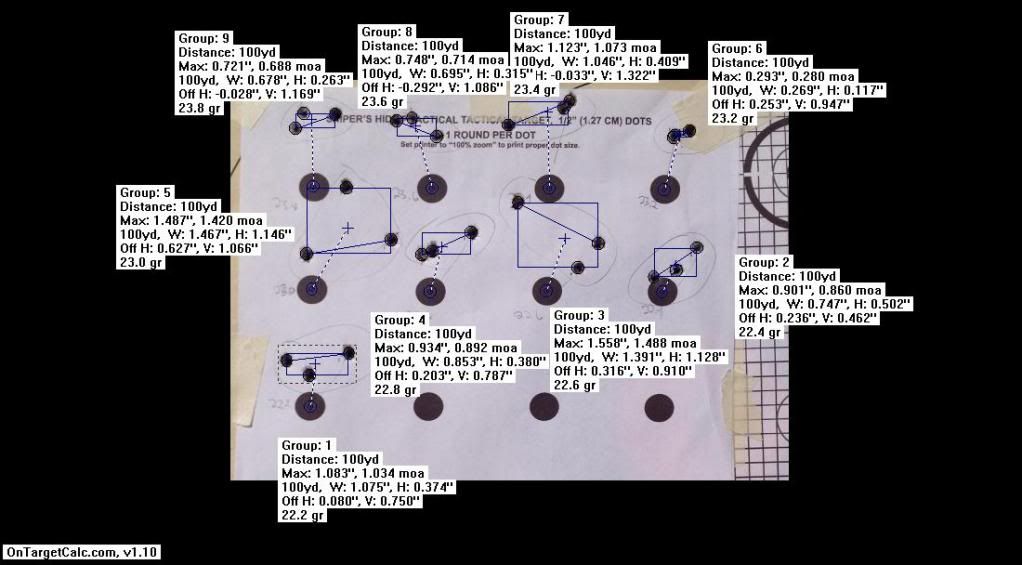So I finally put a scope on the 223 Daniel Defense and tested some loads. My components are as follows:
1x fired LC brass
#41 primers
8028XBR powder 22.2gr --> 23.8gr
77gr Sierras seated to just about mag length
The day was hot with alot of mirage and had wind that was going back and forth between 0 and 5 mph. I did not correct for the wind, which explains some of the lateral spread.
Here is the target:

22.2 gr actually starts at the bottom left and then it goes backwards. In case you can't see it too well, my vertical distance from POA, starting from 22.2gr and going to 23.8 gr are:
.75”
.46”
.91”
.79”
1.1”
.95”
1.3”
1.1”
1.2”
This is what I think... I think that 22.6-23.0 gr is a scatter node and then 23.2 is the beginning of a node that goes farther than the 23.8 I tested to. I believe my next step is to do .1gr increments from 23.6 to 24.3. If I confirm its a node, what do I do next? Usually I would play with seating, with a middle of the node charge, and that would tighten the groups. Since I am constrained to mag length, is this as good as it gets?
What do you guys think??
1x fired LC brass
#41 primers
8028XBR powder 22.2gr --> 23.8gr
77gr Sierras seated to just about mag length
The day was hot with alot of mirage and had wind that was going back and forth between 0 and 5 mph. I did not correct for the wind, which explains some of the lateral spread.
Here is the target:

22.2 gr actually starts at the bottom left and then it goes backwards. In case you can't see it too well, my vertical distance from POA, starting from 22.2gr and going to 23.8 gr are:
.75”
.46”
.91”
.79”
1.1”
.95”
1.3”
1.1”
1.2”
This is what I think... I think that 22.6-23.0 gr is a scatter node and then 23.2 is the beginning of a node that goes farther than the 23.8 I tested to. I believe my next step is to do .1gr increments from 23.6 to 24.3. If I confirm its a node, what do I do next? Usually I would play with seating, with a middle of the node charge, and that would tighten the groups. Since I am constrained to mag length, is this as good as it gets?
What do you guys think??

